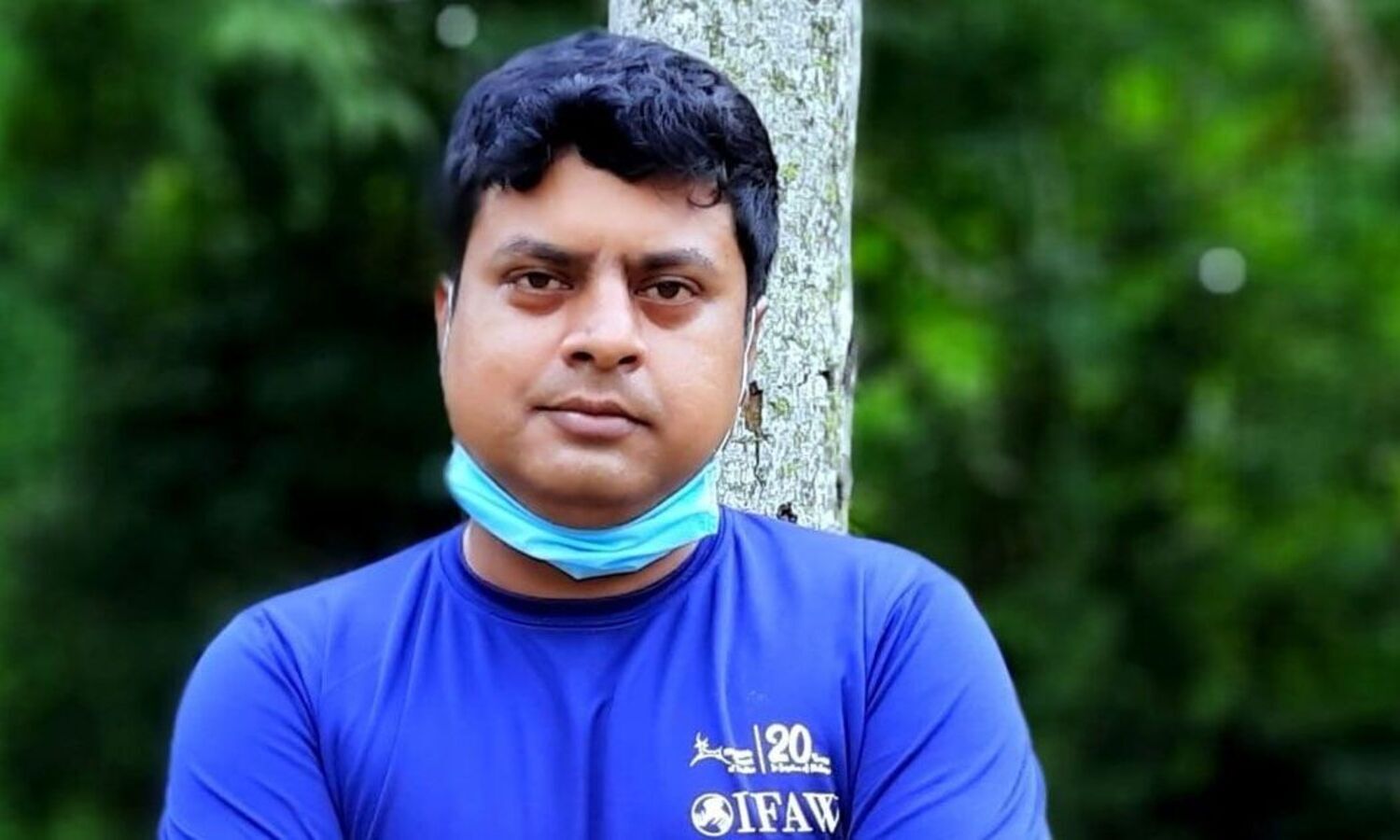
UP CLOSE- Bidisha Singha

Wildlife veterinarian DR. SAMSHUL ALI has rescued and treated several animals in the wild.
There are very few regions in the world that are typically known for their wildlife, and Assam is one such hotspot recognised for its wide variety of fauna. This has always been home to numerous wild species but their survival has never been that easy; their existence has been challenged from all sides by poachers, human encroachments, annual floods, etc. Yet, despite the multiple issues plaguing wildlife, certain people and organisations have relentlessly looked out for them — rescuing, treating and rehabilitating them. And wildlife veterinarian Dr. Samshul Ali has been at the forefront of this human endeavour to help the wild species, in his work with the Wildlife Trust of India (WTI) as manager of the Centre for Wildlife Rehabilitation and Conservation (CWRC), Bokakhat.
Dr. Ali hails from Tangla and he had always planned to work in this field, even as a child, growing up in a family home filled with cows, goats, chickens and his three canine companions (Tiger, Jimmy and Angel). He always wanted to be a herpetologist but his work with the CWRC initiated a keen interest in big cats and megaherbivores, and he has since rescued and treated numerous leopards, tigers, elephants, rhinos, wild buffaloes, langurs, snakes, lizards, turtles and, even, birds. In this exclusive interaction, Dr. Ali talks about his experiences through this life-saving work of his.
A true calling
“Since my childhood I was sure to work in animal science; stories like Robinson Crusoe, Swiss Family Robinson, a very old documentary on Jim Corbett, and later National Geographic and Discovery Channel added fuel to my dreams. My hobby became my career when I took up Veterinary and Animal Husbandry as my subject. I then started working on reptiles and birds in the urban landscape, in association with my college and some NGOs. As soon as I finished my Masters and submitted my thesis, I joined WTI, and when I reached the CWRC at Kaziranga, I realised that I was meant for this.”
Challenge accepted
“I have handled the cases of numerous species. But if I have to rate them, elephants (wild and captive), greater one-horned rhinoceros (adult and infants), big cats (leopard and tigers) and Wild Bovids (Wild Water Buffalo and Indian Gaur) are the most challenging ones.
“The challenge for big animals weighing over two tonnes is their size and the logistics required, while for big cats, the challenge is in smoothly handling them without a flow show. Conflict mitigation between big cats and humans involves high risks for both human and animal life; any mistake or inexperience can be dangerous.”
Beyond all fear
“Wild carnivore cases during the start of my career were really frightful as I would have to be the first in line to be in contact with the suffering big cat. But doing it on a regular basis has made me calm and confident. With experience I have come to know what will happen when such cases occur and how a big cat will react.”
Rescuing wild animals in Assam
“Not to compare with other states, Assam maintains a high standard. Assam being a mega hotspot of biodiversity, the people here know how to co-exist with wild animals. They have evolved with wild animals; they also have imbibed the knowledge of animal behaviour. So the awareness of people with scientific views is acceptable to them as they have mastered the raw knowledge of Nature.”
Rescue and rehabilitation
“I always define rescue in two parts – individual (the wild animal) and a problem. An animal in problem should be rescued. But how? The best way is to solve the problem by giving the animal an escape passage; it’s their right and we must not deprive an innocent creature of the right given by the creator Himself.
“But sometimes, if the escape passage (which is the best type of rescue) doesn’t work, then the capture and translocation of the animal is required. The period of translocation of the animal to a suitable habitat may be short or long, depending upon the condition of the animal.”
Need for more young people in the field
“Yes, of course, we are in need of expert manpower to take proper measures. With time, the anthropogenic pressure on wild animal habitats is increasing and we need more manpower to handle the situation of individual animal care. If young people have an interest in this field, they can help by choosing subjects like veterinary science, botany, zoology, forestry, sociology, which can lead them to their goal. Each subject has a very well-defined role in the conservation of Nature from further degradation. If our habitat is fine, animals will thrive and flourish, if not, they will perish.”
Email: [email protected]

